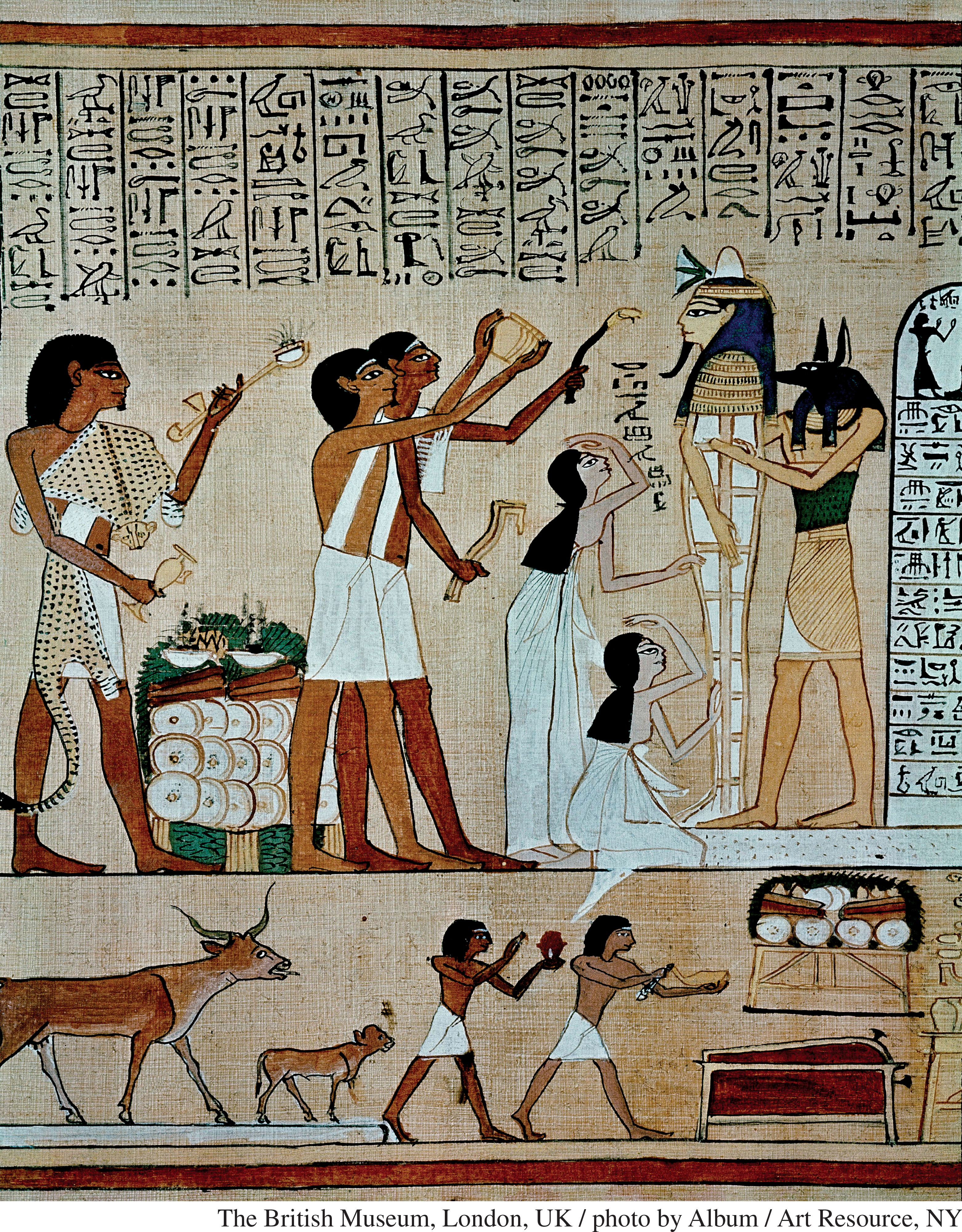Seeing History: Remembering the Dead in Ancient Egypt

The ancient Egyptians believed that preparing for the afterlife and commemorating the dead were crucially important activities. Many works of art, including sculptures and paintings, and works of literature document how much attention and expense people devoted to these aspects of their existence.
This picture is taken from a scroll (the form of books at this time) made from dried and flattened reeds of the papyrus plant, which grew in great quantity along the Nile River and was used to produce the “paper” of antiquity. The extremely arid conditions of the Egyptian environment have allowed innumerable documents written on papyrus to survive to modern times without rotting away. This scroll belonged to an Egyptian named Hunefer and dates to about 1300 B.C.E. It contained his copy of the Book of the Dead, the text containing instructions for a successful entry into and pleasant existence during the afterlife. All Egyptians who could afford the cost had a copy of the Book of the Dead made for themselves.
The brightly painted picture shows in its upper part the mummy of Hunefer (that is, his dead body prepared and decorated for eternal preservation). The god Anubis is holding up the mummy with his arms. As usual, Anubis is represented as having a human body with the head of a jackal. As is often characteristic of human figures in Egyptian painting, his posture (like that of the human beings in the picture) is shown in a contorted fashion that is physically impossible in real life, with the legs and head proceeding forward to left or right while the torso faces out toward the viewer. The women in front of the mummy are Hunefer’s wife and daughter making gestures of mourning. Behind them stand three priests; the two in front are performing the religious ceremony known as “Opening of the Mouth.” They are reaching toward the mummy’s mouth to touch it with special sacred implements that were thought to allow the mouth to open so that the dead person’s individual personality—the ba as the Egyptians called it—could flow out to join the rest of the deceased’s spirit for a happy new existence after death in the underworld.
The pyramidal building on the right is a depiction of Hunefer’s tomb; the pillar carrying hieroglyphic writing in front of the tomb building is a “larger-than-actual-size” representation of the actual one that would have stood next to the tomb’s entranceway. The lower part of the picture shows at the right a table holding the sacred implements used in the ritual of the ceremony. In the center, two men are preparing for a sacrifice that includes the foreleg of the calf shown to their left. The calf is shown standing behind them without its leg; apparently, the sacrifice required the leg to be cut off while the calf was still alive. Again, the painting seems not to be meant to be a realistic representation of what happened, as it seems unlikely that a calf with its leg having just been amputated could remain standing. The cow behind the calf is presumably its mother, and her posture extending her neck suggests that she is in an agitated state.
Questions to Consider
- Why do you think that this picture combines realistic and unrealistic representations of various elements in its composition in order to produce meaning(s)?
- What do you think might have been the meaning(s) expressed by the picture?